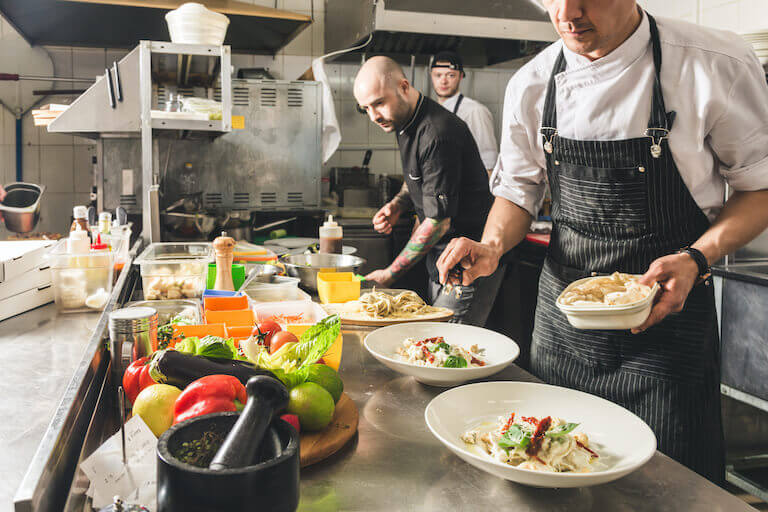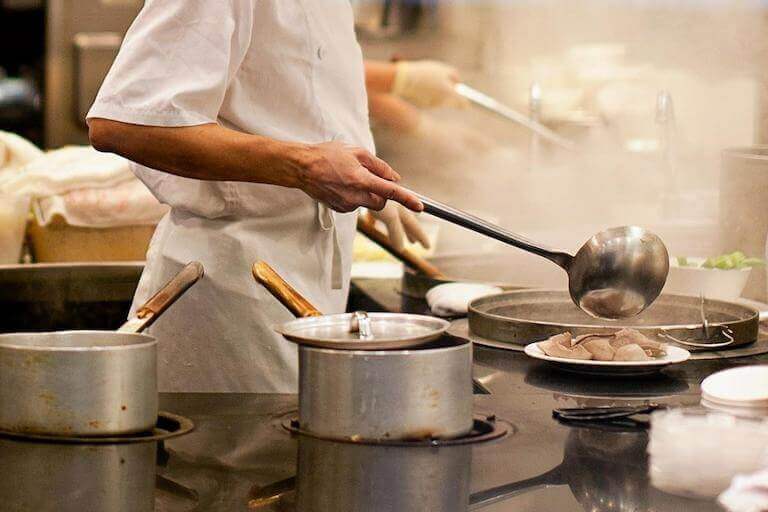What’s the most important ingredient in the kitchen? It’s not the food – it’s the people.
If you’re a restaurant manager or head chef, the way you manage your staff can make or break the success of your restaurant. And one of the most important things you can do to help your employees be successful in the kitchen is to manage your back-of-house schedule well.
So, how can you pull this off? Let’s take a closer look at some tips on how to schedule restaurant staff.
Build a Well-Balanced Team
Before you start building your schedule, take a step back and consider your entire team. Every person in your kitchen brings their own abilities and areas where their skills could improve; consider trying to balance these attributes when scheduling your staff in order to create a sustainable, supportive dynamic in the kitchen.
While it makes sense to try to schedule your best chefs for your busiest shifts, you don’t necessarily want to concentrate them all on those shifts. No matter how much someone is willing to work, they can’t be there for every single shift. Your goal should be to spread out your talent, so that you have a strong crew at all times.

Consider your employees’ strengths when creating a schedule to ensure you always have a strong team in the kitchen.
Make sure that you have a strong staff working on each shift, then build your schedule out from there. Not only does this help you ensure you have a solid crew in the kitchen, it also can help make sure your schedule is fair – that certain chefs aren’t always getting stuck with less desirable shifts.
Beyond that, it gives less experienced cooks the opportunity to learn from their more experienced colleagues, which benefits everybody in the long run.
Don’t Guess – Work from Data
Even as you aim for creating a balanced schedule, you’ll still likely want your top chefs on your most demanding shifts. But how do you determine which shifts need which cooks?
Conventional wisdom may lead you to believe that certain nights are busiest, and your own restaurant experience may confirm this. Still, don’t guess – use your sales figures to identify exactly when your busiest shifts are. You might be surprised. And when you know exactly when you expect to be busy—and slow—you can be more precise with your staffing levels.

When you use sales figures to create your schedules, you can be confident that you’ll have the right staff in the kitchen at any given time.
Also, take into account seasonal fluctuations in business, local events, and even weather when making the schedule. In addition to helping you make sure you have adequate staff for each shift, it can also help you recognize if you need to hire more people to keep up with business.
Keep Things Predictable
Variety may be the spice of life, but when it comes to work schedules, people usually like some predictability. This allows them to plan the rest of their lives around their schedule—which is essential to keeping your staff happy, engaged, and productive.
Create a schedule for two weeks at a time, so that staff knows what their shifts will be far in advance. You should also always try to post the schedule at the same time and on the same day, and as far ahead as possible—employees shouldn’t be finding out on Sunday afternoon what their schedule will be for the period that starts the following day.

Creating a consistent schedule can help your employees plan their lives around work and stay focused on the job.
If it works for your employees, try to create a set, consistent schedule. You’re certain to have to make some adjustments every time, but your employees are likely to appreciate the predictability—not to mention that it can mean less work for you, too.
Get Time-Off Requests as Early as Possible
Another benefit of scheduling two weeks at a time is that you won’t get an avalanche of last-minute time-off requests every week. Set a deadline several days in advance of when you create the schedule for staff to submit any time-off requests.
This isn’t just a headache-saver for you. When you have those requests in hand, you can make each schedule fair and balanced, rather than having to scramble to cover shifts at the last minute—which can lead to unpredictable schedules that can catch your employees by surprise.
Confirm Your Employees’ Availability
Different employees have different appetites for shifts—some may want to work as much as possible, while others may be balancing other jobs or have other commitments and have a strict hourly limit. Always respect your staff’s availability so you can avoid burnout.

Consider checking in with your staff periodically to ensure everyone is working the amount of shifts they’d like.
Each person probably gave their availability when they were hired, but that doesn’t mean it will stay the same forever. Ask regularly to make sure your information is up to date and you’re giving everyone the amount of hours they want or need.
Cross-Train Where You Can
Cross-train your staff as much as possible, so that if there are any surprises—unexpectedly busy shits, last-minute no-shows—someone can jump in where needed. This can also help you work around time-off requests, making them less disruptive to the schedule.
An additional benefit of this is that, if time-off requests aren’t as big of a deal, you can encourage your staff to take them more—which can make them happier and lead to better performance and retention.
That’s why we partnered with Auguste Escoffier Global Solutions, an organization that can provide employers with training solutions to improve the quality of their employees without negatively impacting staffing or scheduling.
Ask for Feedback Often
The restaurant industry can be a grind, and your staff may be accustomed to working late nights, double shifts, and “clopening”—closing the restaurant late at night, and then coming back early the next morning to open again. But just because they’re used to these things, and may even be willing to do them, doesn’t mean they necessarily want to.
You should already be making a point of asking about your employees’ availability, but you should also ask them how they think you’re doing with the schedule in general. Is the schedule working? Do you have any blind spots? For example, are you unintentionally scheduling one chef for too many doubles, or not giving another any “good shifts”?

Asking for feedback often can create a supportive environment for your staff.
When you check in with your staff regularly, you let them know that you’re there for them and willing to offer the support and resources they may need to be successful—a dynamic with benefits that go beyond scheduling and can contribute to the overall success of your business.
Invest in Your Management Skills
The way you schedule your staff affects the culture you create at your restaurant, which can be a selling point when trying to attract high-quality employees. It’s one of the many managerial skills that go into running a successful restaurant.
If you’re looking to elevate your restaurant management skills, pursuing a culinary education could be a good move. Escoffier’s Food Entrepreneurship and Hospitality & Restaurant Operations Management programs put fundamental business principles in the context of a broader culinary curriculum, exposing you to a wide range of tools that can help your business grow and thrive.
Financial aid, grants, and scholarships are available to those who apply and qualify, which can help make this next step in your culinary journey that much easier to take.
DID YOU ENJOY THIS ARTICLE? FOR MORE ON RESTAURANT MANAGEMENT, CHECK OUT THESE ARTICLES NEXT!
- How to Communicate Effectively in the Kitchen
- Why Businesses Should Partner With Culinary Schools for Externships
- 6 Skills That All Restaurant Managers Need
This article was originally published on September 24, 2018, and has since been updated.
*Information may not reflect every student’s experience. Results and outcomes may be based on several factors, such as geographical region or previous experience.





